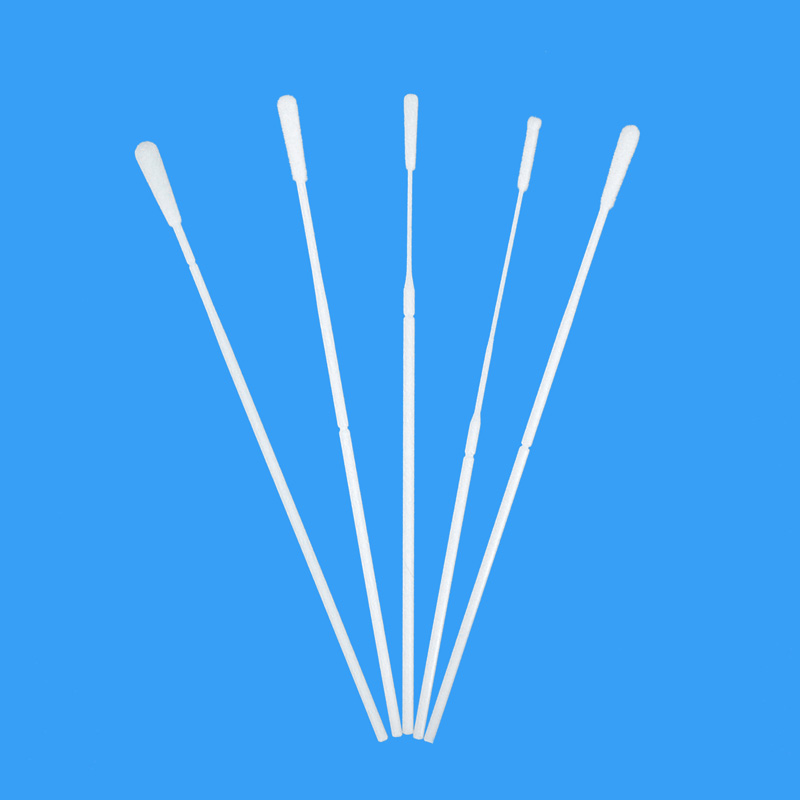Como selecionar swabs de amostragem
Cotonetes de amostragem
Sampling swabs are the important part of testing for COVID-19, Selecionar e o uso de swabs podem melhorar a precisão e a eficácia do teste.
Com base nas informações fornecidas, A seguir, são apresentadas algumas recomendações para a seleção e uso de swabs de amostragem:
Sampling Swabs Length
The Sampling swabs should be about 15cm in length, neither too long nor too short.
But swabs that are too long are prone to shaking and inconvenient to operate, while swabs that are too short may expose the sampler to bodily fluids of the subject and increase the risk of infection.
Sampling Swabs Handle
Because the stem material of the sampling swab should be easy to break. So it is recommended to use a hollow polystyrene (PS) pole.
Do not use wood sticks or bamboo skewers, because wood sticks or bamboo skewers are also easy to absorb proteins.
The easily broken material helps the sampler retain the appropriate length of the swab stem to avoid leakage due to the tube cap being too long.
Swab Sterile
Because the head of the swab should be sterile flocking. Sterile flocking can maximize the amount of samples collected.
It is not toxic to pathogens and contact cells and tissues, and does not affect subsequent detection.
Effect
Calcium alginate sponge and cotton have strong adsorption effect on protein and are not easy to eluate, which will affect the subsequent detection.

Nasal swab sampling
Para amostragem de esfregaço nasal:
It recommended that patients first remove secretions from the surface of the anterior nasal foramina.
And measure the distance from the nostril to the root of the ear with a swab marked by the hand.
The nasal swab is slowly inserted into the nostril (against the earlobe) with a wall touch sensation.
The swab left in the nose for 1530 seconds and gently rotate 35 vezes.
For throat swab sampling, the sampler may first use a tongue platen to remind the patient to make an “ah ~” som.
Lift the patient’s palate to expose the back wall of the pharynx and swab over the base of the tongue to the back of the pharynx (lesion site)

















